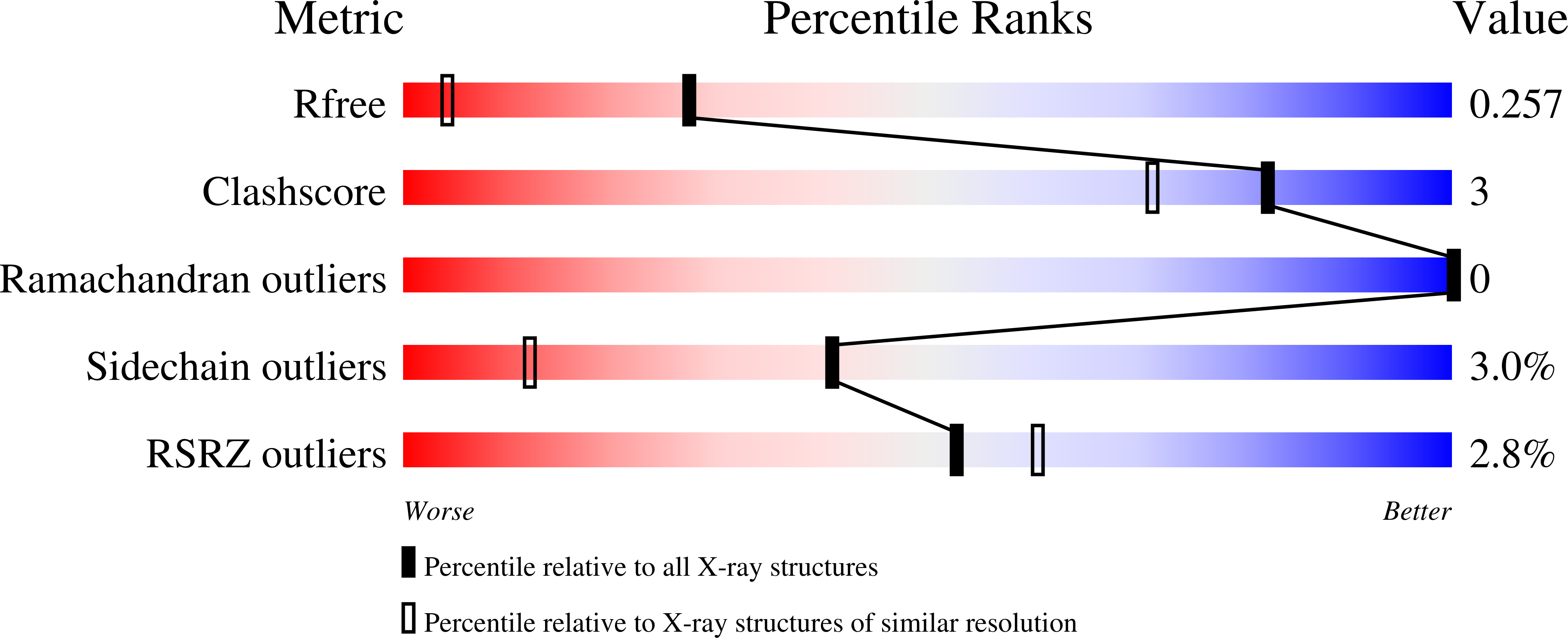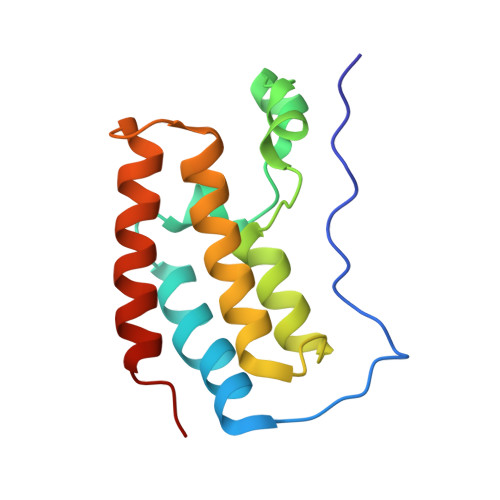Structural Characterization of Degrader-Induced Ternary Complexes Using Hydrogen-Deuterium Exchange Mass Spectrometry and Computational Modeling: Implications for Structure-Based Design.
Eron, S.J., Huang, H., Agafonov, R.V., Fitzgerald, M.E., Patel, J., Michael, R.E., Lee, T.D., Hart, A.A., Shaulsky, J., Nasveschuk, C.G., Phillips, A.J., Fisher, S.L., Good, A.(2021) ACS Chem Biol 16: 2228-2243
- PubMed: 34582690
- DOI: https://doi.org/10.1021/acschembio.1c00376
- Primary Citation of Related Structures:
6WVX - PubMed Abstract:
The field of targeted protein degradation (TPD) has grown exponentially over the past decade with the goal of developing therapies that mark proteins for destruction leveraging the ubiquitin-proteasome system. One common approach to achieve TPD is to employ a heterobifunctional molecule, termed as a degrader, to recruit the protein target of interest to the E3 ligase machinery. The resultant generation of an intermediary ternary complex (target-degrader-ligase) is pivotal in the degradation process. Understanding the ternary complex geometry offers valuable insight into selectivity, catalytic efficiency, linker chemistry, and rational degrader design. In this study, we utilize hydrogen-deuterium exchange mass spectrometry (HDX-MS) to identify degrader-induced protein-protein interfaces. We then use these data in conjunction with constrained protein docking to build three-dimensional models of the ternary complex. The approach was used to characterize complex formation between the E3 ligase CRBN and the first bromodomain of BRD4, a prominent oncology target. We show marked differences in the ternary complexes formed in solution based on distinct patterns of deuterium uptake for two degraders, CFT-1297 and dBET6. CFT-1297, which exhibited positive cooperativity, altered the deuterium uptake profile revealing the degrader-induced protein-protein interface of the ternary complex. For CFT-1297, the ternary complexes generated by the highest scoring HDX-constrained docking models differ markedly from those observed in the published crystal structures. These results highlight the potential utility of HDX-MS to provide rapidly accessible structural insights into degrader-induced protein-protein interfaces in solution. They further suggest that degrader ternary complexes exhibit significant conformation flexibility and that biologically relevant complexes may well not exhibit the largest interaction surfaces between proteins. Taken together, the results indicate that methods capable of incorporating linker conformation uncertainty may prove an important component in degrader design moving forward. In addition, the development of scoring functions modified to handle interfaces with no evolved complementarity, for example, through consideration of high levels of water infiltration, may prove valuable. Furthermore, the use of crystal structures as validation tools for novel degrader methods needs to be considered with caution.
Organizational Affiliation:
C4 Therapeutics, Inc., 490 Arsenal Way Suite 200, Watertown, Massachusetts 02472, United States.















